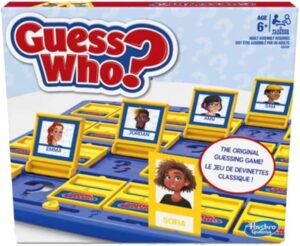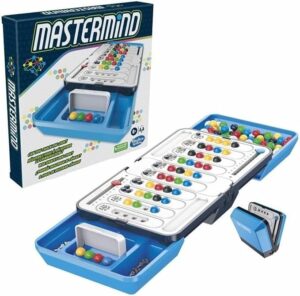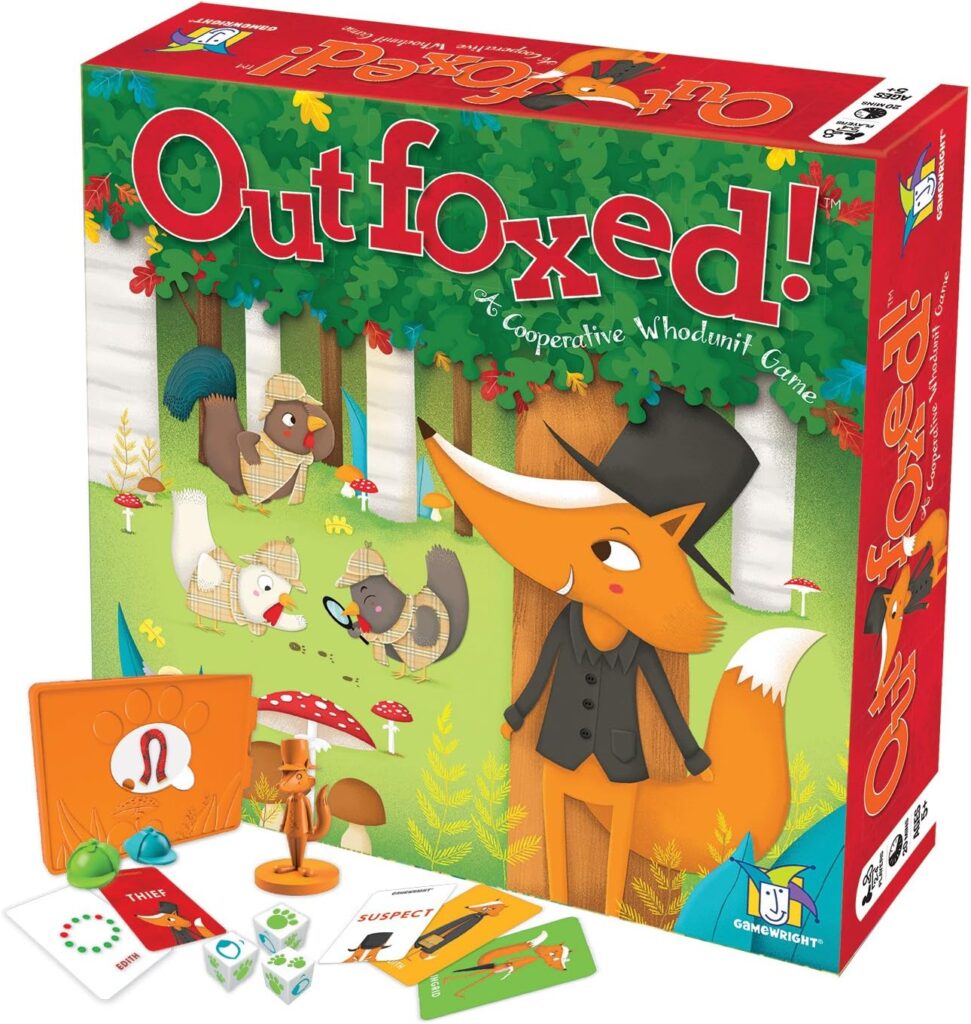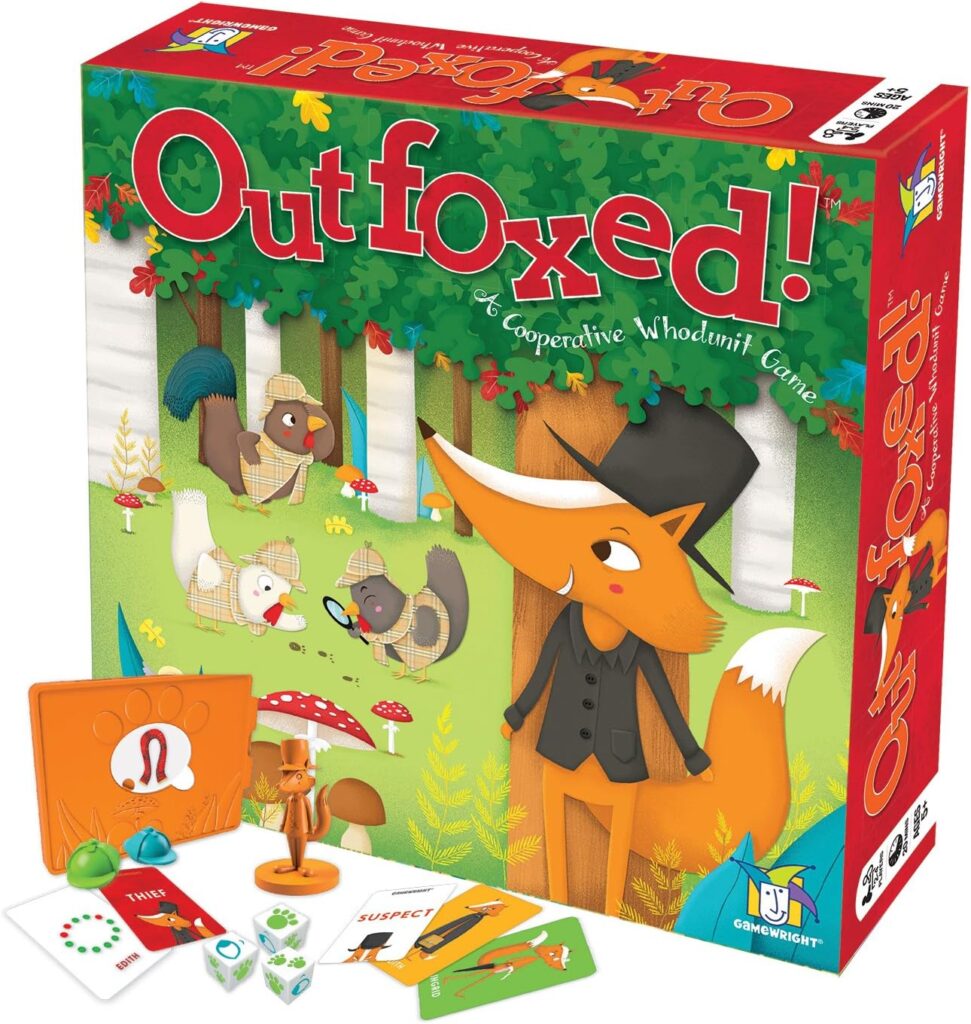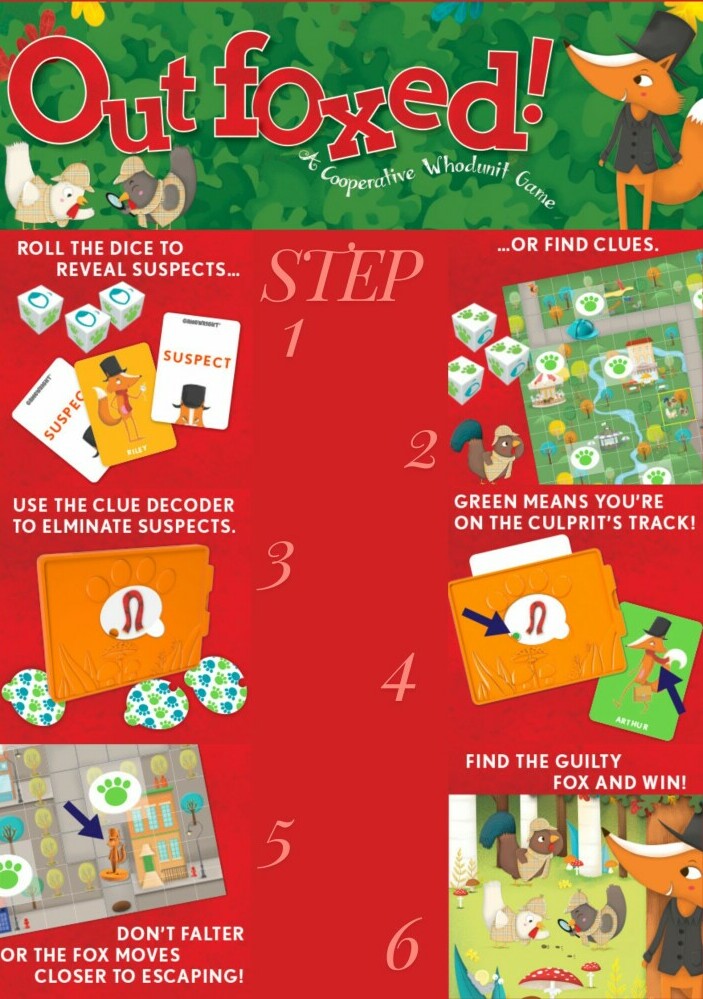 What is the process of elimination in gameplay and how do games such as Outfoxed, Clue, Cluedo and Mystery style games support education and learning as a life skill where the process of elimination is needed? It is used in games such as these when the object of the game is to determine a culprit, thief or murderer for example. It’s a strategy of logic where one uses the clues that are given or come across in a game and systematically rules out all other possibilities. This is achieved by narrowing down incorrect results using comparison of data (clues or evidence) observed throughout the game to arrive at the only possible conclusion and a winner is determined.
What is the process of elimination in gameplay and how do games such as Outfoxed, Clue, Cluedo and Mystery style games support education and learning as a life skill where the process of elimination is needed? It is used in games such as these when the object of the game is to determine a culprit, thief or murderer for example. It’s a strategy of logic where one uses the clues that are given or come across in a game and systematically rules out all other possibilities. This is achieved by narrowing down incorrect results using comparison of data (clues or evidence) observed throughout the game to arrive at the only possible conclusion and a winner is determined.
Firstly, What is The Process of Elimination?
It is the process of systematically narrowing down choices, options, participants, until the desired or correct result is achieved or a decision is made after weighing up the variables. It can be applied to many situations in life where one needs to make a decision or choice from a variety of options.
How Does Learning the Process of Elimination Support a Person as an Adult?
This is such a crucial life skill to learn, understand and be able to put into practice. Playing games that involve this process is a fantastic way to teach children an important skill in how to look at the pros and cons of situations and is one of the steps in decision making also. It also helps them understand other aspects of life, for example, many jobs would have use of this skill and is a must when it comes to working in any scientific area, whether it be learning or a profession. In the case of an employer looking to hire someone, they would be able to eliminate less suitable candidates until they narrow it down to the one person that fits their ideal employee profile. In a job situation where teams are in a brainstorming session, members have to filter out the less favourable ideas until they get down to the one idea that ticks all the boxes. It fits into all areas of life, even down to simple choices of what to wear on any particular day, or going on a holiday, what to cook for dinner, how much money you need to sort out a budget and save money.
Is There a Stepping Stone Process to it?

It’s probably a good idea to introduce the concept of the process of elimination in increments depending on the age of the child. Games like Guess Who are a great way to introduce younger children to the concept of ruling out people who have the same eye colour, hair colour, accessories, skin colour, etc. Other forms of logic puzzles like Mastermind might be considered to be more appropriate to an older child. It requires working through a series of combinations based on whether a person gets the coloured marker in the right spot and right place, right place and wrong spot, or no place or spot at all and so uses the data they collect to eliminate the wrong colours and work towards determining what all the correct colours used are and what position they are placed. Mastermind is an excellent continuation of the strategies learned where memory comes into play and being able to retain what has been shown to plan your next move.
Games like Outfoxed, Cluedo, Clue etc., are wonderful additions to the household to help cement and deepen the knowledge gained and bring a certain amount of variety to the table and offers a different way of thinking due to the games being very different. Outfoxed is probably more for appropriate from the age of 5, whereas Cluedo and Clue perhaps would be better for 8 year olds an up. My younger grandchildren love Outfoxed at the moment, they are currently 6 and 8 years old and have been playing it since they were 4 (with help) and 6. I’m at the point now where I can teach Cluedo to the 8 year old. She’s been playing a simpler version of Mastermind since she was 5, but the genuine Mastermind is slightly more complicated.
What Does the Process of Elimination Look Like in Gameplay?
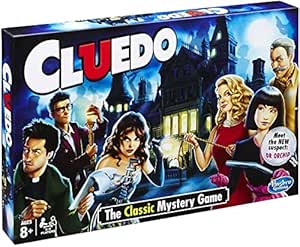 In terms of solving a crime in real life, investigators look at evidence found at a crime scene, eye witness accounts including descriptions of the perpetrator, gather information and document the information. This is then compared and using the data gathered, an investigator can start to rule out suspects based on what they have found. The same process is used when playing games that require investigator skills. I grew up playing Cluedo, a game which I always enjoyed, and when I was doing my teacher training practical at one of the high schools, I even used it as a base for a game I created to make learning about electricity fun. When you have younger children, or in my case, younger grandchildren, a game like Outfoxed can be a great starting point for them to learn the process of elimination if they are past the age where Guess Who isn’t as challenging for them.
In terms of solving a crime in real life, investigators look at evidence found at a crime scene, eye witness accounts including descriptions of the perpetrator, gather information and document the information. This is then compared and using the data gathered, an investigator can start to rule out suspects based on what they have found. The same process is used when playing games that require investigator skills. I grew up playing Cluedo, a game which I always enjoyed, and when I was doing my teacher training practical at one of the high schools, I even used it as a base for a game I created to make learning about electricity fun. When you have younger children, or in my case, younger grandchildren, a game like Outfoxed can be a great starting point for them to learn the process of elimination if they are past the age where Guess Who isn’t as challenging for them.
What Steps are Involved in the Process of Elimination?
- Identify all possible options: Start by listing or considering all the potential choices, answers, or participants.
- Gather information: Collect clues, data, feedback, or evidence that can help in making decisions.
- Apply known rules or constraints: Use the rules of the game, logical constraints, or known facts to rule out impossible or incorrect options.
- Make deductions: Based on the remaining possibilities, make logical deductions to further narrow down the options.
- Iterate as necessary: Continue gathering information and making deductions until only the correct or best option remains.
- Confirm the result: Ensure that the final choice is correct or that the last remaining participant is the winner.
Now Apply this to a Mystery Game
In mystery-style games like Clue (Cluedo) and Outfoxed, the process of elimination is a key strategy for deducing the correct solution. Here is an explanation of how to use this process in these types of games:
Steps in the Process of Elimination for Mystery Games
- Identify All Possible Options:
- Clue (Cluedo): The options are the suspects, weapons, and rooms.
- Outfoxed: The options are the suspects.
- Collect Clues and Gather Information:
- Clue (Cluedo): Players collect clues by moving around the board, entering rooms, and making suggestions about the suspect, weapon, and room. Other players respond with cards to disprove the suggestion.
- Outfoxed: Players collect clues by revealing suspect cards and comparing them with the clue decoder to see if they match the culprit’s accessories.
- Eliminate Based on Evidence:
- Clue (Cluedo):
- If a player shows you a card that matches your suggestion (e.g., a specific suspect), you can eliminate that suspect from being the murderer.
- Keep track of the cards shown by other players to deduce which cards are held by whom and which remain in the confidential case file.
- Outfoxed:
- Use the clue decoder to check accessories (e.g., if the suspect wears glasses). If the clue indicates glasses, eliminate all suspects without glasses.
- Make Logical Deductions:
- Clue (Cluedo):
- Cross-reference all known information and clues to narrow down the possible suspects, weapons, and rooms.
- For example, if you know a particular weapon is not in the game, eliminate it from your list of possibilities.
- Outfoxed:
- Continue revealing and checking clues to systematically eliminate suspects until you deduce the correct culprit.
- Iterate and Confirm:
- Clue (Cluedo): –
- As more information is gathered, refine your list of potential suspects, weapons, and rooms.
- When you have narrowed it down to one possible combination, make a final accusation to win the game.
- Outfoxed:
- Keep eliminating suspects based on new clues until only one remains. Make the final accusation when confident.
More Examples in Practice of the Process of Elimination in General
- In a sports knockout tournament: Teams that lose their matches are progressively eliminated until only one champion remains
- In a classroom setting with a multiple-choice exam: A student might eliminate obviously wrong answers to improve their chances of guessing the right one among the remaining choices.
In Conclusion:
The question of what is the process of elimination in gameplay and how do board games such as Outfoxed, Clue, and Cluedo style games, factor in to learning this life skill has been answered within this article. It really is a necessary life skill to learn and playing board games can assist young players to develop skills in this area. This process is absolutely needed in everyday life and if a board game can support learning it, then I would highly recommend them.
Thank you for reading and I hope you found this article informative.
Warm Wishes
Ange

